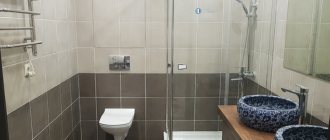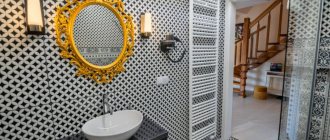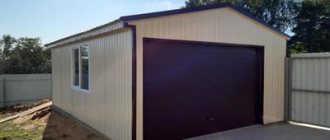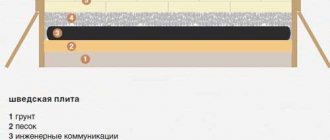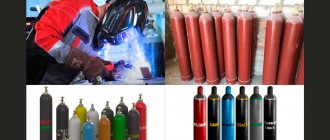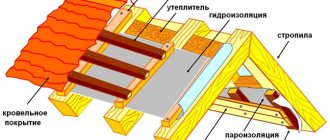The difficulty in choosing a decorative floor covering lies in the variety of materials and their installation technology. Along with traditional parquet and linoleum, vinyl laminate has recently appeared on the market. Externally, it imitates the structure of wood, and installation is in many ways similar to soft coverings. Therefore, before purchasing, you should analyze the advantages and disadvantages of vinyl laminate, reviews from professionals. Based on the data obtained, the feasibility of purchasing this coverage is determined.
What is vinyl flooring?
Simply put, it is a floor that combines the characteristics of wood and laminate flooring at the price of a cheaper laminated wood floor.
The structure and method of fastening of such a floor can be different, and the strength depends on the abrasion class, expressed in two numbers. However, everything has its time, so let's start with its benefits!
Necessary tool
When laying any laminate, a significant part of the time is spent on adjusting the panels - cutting to size, drilling holes. Quartz vinyl laminate flooring is easier to cut and requires fewer tools to install.
What is needed for laying SPC panels:
- stationery or construction knife;
- tape measure, square;
- pencil;
- rubber mallet with tamping strip.
Benefits of Vinyl Flooring
Vinyl is a flexible material that is completely waterproof. However, it is worth remembering that while the vinyl is waterproof, the joints and base are not. Therefore, if you plan to use vinyl in wet areas, the flooring must be well bonded to the surface and the seams must be secured after installation.
In a bathroom, the vinyl should be glued to the floor and the entire floor coated with varnish to seal the seams.
Vinyl flooring is flexible and sound-absorbing, making it ideal for children's rooms, bedrooms and living rooms. Due to their water resistance and the ability to wash them frequently, they are suitable for the kitchen and bathroom.
Vinyl's flexibility increases its impact resistance. Falling objects will not damage the floor.
They are also an excellent solution for updating the interior without having to remove the old floor. Vinyl sheets are only 3mm thick, so in many cases you will be able to lay it directly over the old floor.
Many factors contribute to vinyl flooring being safe to use. It has very good anti-slip properties, which is especially important in areas used by children, the elderly and the disabled. In addition, vinyl does not release chemicals that can pose a threat to health or life, and is fire resistant. In addition, it is antistatic and does not attract dust. This makes it a very good choice for homes with allergy sufferers.
Underfloor heating
Vinyl flooring, in the form of vinyl panels and composite panels, can be used in conjunction with underfloor heating as long as manufacturer specifications are met.
Underfloor heating should not exceed a surface temperature of 27°C. For electric heating systems, it is recommended not to exceed 60 W/m².
Step-by-step recommendations
First you need to calculate the number of rows. If necessary, trim the dies so that the first and last rows are the same in width. The tiles must be laid with an offset of each next row relative to the previous one.
Step-by-step technology for laying interlocking vinyl flooring:
- The groove of the end and longitudinal lock must be located on the stacker side. The groove facing the wall is trimmed.
- The first row is laid with the end locks of the tiles snapped into place. Using a mallet and a roller, secure the connection.
- At the end of the first row, you need to cut off the excess length of the die and install the end panel.
- Insert spacers between the wall and the tile at a distance of 5-10 mm to avoid accidental shifting of the lamellas.
- The tiles in the second row must be carefully inserted into the lock of the tiles of the first row at an angle of 25 degrees and smoothly lowered until the lock is completely closed. In this case, you need to shift the lamella of the second row by 25 cm relative to the first. Close the end lock in the same way. To ensure a reliable connection, use a rubber mallet to tap the panel until the cracks disappear. The blows are applied not to the lamella, but to a special bar, this will prevent damage to the coating.
- When laying the last row, you need to adjust the size of the dies in accordance with the markings, and cut off the excess with a special construction knife.
- When laying tiles near pipes and columns, a cardboard pattern is used. It is recommended to outline the shape on paper and, applying it to the tile, cut out the holes according to this template.
Important: the quality of laying the coating itself depends on the quality of the connection of the locks.
Durability of vinyl floors
Like laminate panels, vinyl flooring has its own abrasion rating, which depends on the thickness of the outer film covering it.
It is numbered based on the strength of the floor, and the higher the number, the thicker the outer surface and therefore the more durable the floor.
The class designation consists of two numbers. The first signifies the type of room the panels are intended for and the second level, for example 2 are residential and 3 are public.
The second number indicates the acceptable use of the floor: 1 - low, 2 - medium, 3 - high.
Abrasion Class Numbers for Vinyl Flooring
- classes numbered 21, 22, 23 mean floors for domestic use and external surface thickness from 0.3 mm to 0.55 mm
- classes numbered 31, 32, 33 mean floors for commercial and domestic use, and the thickness of the outer layer is from 0.55 to 0.7 mm.
- Above 33 floors designed for large commercial buildings, outer layer thickness from 0.7 mm.
If you compare vinyl to laminate panels:
Vinyl in grade number 32 is equivalent to an abrasion rating of AC4, and vinyl grade 33 is equivalent to an abrasion rating of AC5.
Consumer Reviews
Despite the relative newness of flexible vinyl laminate, many consumers have already appreciated the many advantages of this coating. High-quality products under the Leroy Merlin brand are in particular demand.
Practice of use, as well as reviews, show that vinyl soft, or flexible, laminates are superior to popular types of floor coverings in most technical characteristics and operational features, and the high price is fully compensated by the durability and quality of the material.
Types of Vinyl Flooring
Just as with wood floors, which come from both solid planks and laminated slabs, there are several types of flooring available with vinyl flooring.
By design, vinyl floors can be divided into:
- Vinyl records, i.e. only vinyl for gluing - price: from 1400 rubles / m2, thickness 3mm
- Vinyl panels - price from 2200 rubles / m2, thickness 4.5 mm
- Composite vinyl panels, so-called rigid panels 2,800 rubles / m2, 6 mm thick
A variety of vinyl flooring designs find their uses in different locations, but each solution also has its own limitations and installation requirements.
Manufacturers
Most vinyl laminate manufacturers are foreign companies.
We can identify 12 of the most competitive companies offering their products in a huge range on the Russian markets:
- Vinyl laminate Tarkett Allure - occupies a leading position in the Russian market; deliveries are also carried out outside its borders.
- Allure (China) is one of the leaders in sales in the Russian Federation.
- Finefloor quartz vinyl laminate - offers lines that can be used in enterprises. Laminate in this category can withstand high loads.
- Holzplast vinyl laminate is a harmony of quality and price.
- Vinilam (Belgium) – waterproof and moisture-resistant laminate; some samples are suitable for laying on warm floors.
- Vinyl covering Quick-Step (Belgium) – a wide range of products.
- Grunde (Germany) – coating that is resistant to moisture and ultraviolet radiation.
- Flexo – a variety of colors, imitations and textures;
- Belgian vinyl laminate Moduleo with a locking installation system.
- Contesse Floor is a laminate from another Belgian company.
- Nox Prime Ecoclick (South Korea) – super moisture-resistant coating
- American laminate Allure Floor 12012 Cherri is certified internationally; has a very high cost.
Color
No matter what type of vinyl flooring you choose, it can look like stone and wood. The shape of the floor itself can take the form of tiles or planks. The final flooring pattern will further depend on how it is installed.
The tiles can be arranged in a checkerboard pattern, and the boards can be arranged in a herringbone pattern.
Operating procedure
You can often find positive reviews about vinyl laminate flooring, which indicate high reliability. It is worth knowing that in order to achieve such indicators, you need to properly care for your laminate flooring. It is important to immediately remove all stains of various types from the coating.
It is best to use products that are biodegradable. Such products will not harm the coating. Before using any product, you should carefully read the instructions for use. It happens that some products do not require rinsing with water after use. In particularly difficult cases, you need to use special vinyl-based polishes.
How to properly care for flexible laminate flooring?
You can replace damaged tiles or areas of linoleum rolls yourself. It will be necessary to dismantle part of the laminate area and remove all glue from the floor. Then carry out installation again according to the procedure described above.
If you need to find out whether laminate flooring is reliable, expert reviews will come in handy. All that is required is to choose the appropriate solution and follow the installation rules. If everything is done properly, the coating will last you about ten to fifteen years.
Vinyl panels
This is a 4.5mm thick panel with a connector for easy assembly . Vinyl paneling can be glued or laid without glue, making it easier to install.
If you don't glue the panels to the base, installation is just as easy as laminated panels.
Installing Vinyl Panels
A vinyl panel can be made entirely of vinyl or backed by HDF or cork board. The additional layer increases the resistance of the panel and improves its sound insulation properties.
It is worth noting that for vinyl floors we use special underlays with a higher density than underlays for laminate floors. This is because vinyl flooring has a higher density and is therefore heavier.
Connections
Vinyl Panel Joints
In general, the width is virtually invisible, however, conspicuous joints will be visible. Depending on the floor pattern, the joints may be more or less noticeable. This is worth keeping in mind when planning the floor layout.
Combination of different vinyl panel decors
Panels from one manufacturer can be easily combined with other designs. This, combined with the material's water resistance, allows you to place vinyls that match the tiles in the bathroom, wood-colored living room and others in the open kitchen, creating invisible connections.
The connection between the different panel decorations is invisible, and their water resistance allows vinyl flooring to be placed throughout the apartment.
Tips for choosing
You should choose your vinyl flooring carefully. You need to pay attention to the technical characteristics of the material and, above all, to the thickness of the panel or tile. It is important to consider the area of application of the laminate, as well as such nuances as:
- humidity level in the room;
- degree of load on the floor;
- exposure to direct sunlight;
- expected service life.
If you expect active load on the floor, then it is better to purchase a middle-class laminate. For walk-through rooms, tiles of lower classes will be suitable. For industrial enterprises it is better to use expensive high-class samples.
An important role is played by the manufacturer, as well as the price of the material. Established brands usually justify the more expensive cost of their products.
Nowadays, there are many counterfeits of products from well-known suppliers on the market. To protect yourself from low-quality counterfeits, you should check the labeling and ask sellers for a certificate of product conformity. As a rule, such a laminate will cost an order of magnitude cheaper than the original.
Composite Vinyl Panel
Composite Vinyl Panel
This is an extension of the previous two concepts. This panel is made up of multiple layers bonded together, including layers of composite material that make it such an extraordinary panel.
Thanks to its structure, we have a finished product that, due to its greater thickness, is resistant to substrate unevenness and better dampens sounds.
Installing Vinyl Flooring
Vinyl panels can be successfully installed yourself. At the very beginning, it is worth determining the direction of laying the boards, which should correspond to the falling rays of the sun or be parallel to the longest wall in a particular room. Before installing vinyl, be sure to prepare the floor properly. Remove any rough edges and thoroughly clean it of any dirt.
Laying vinyl panels begins by leaving 1 cm of expansion joints. To do this, sometimes you need to cut the panels to the desired size. A regular hand saw will work well for this type of operation. However, it pays to have a sharp tool. Maintain the distance between panels and walls using special expansion joints.
The panels have connectors, so-called feathers and grooves, which facilitate the connection of subsequent rows. Thanks to them, installation of the panels is not only extremely simple, but also does not require the use of glue. Under no circumstances should boards be secured with nails or screws. It must be laid using floating techniques.
Methods for connecting flexible laminate
Planks with adhesive smart tape are connected to each other at the ends, that is, in a sense, this is an analogue of the locking connections of a traditional laminate. The lower part of such planks is shifted relative to the upper (decorative) part by 20-25 mm, due to this a free thin edge appears on the side - smart adhesive tape is applied to it.
Adhesive smart tape is sometimes called an adhesive lock, since it is used to connect the ends of laminate planks
Flexible adhesive-based laminate is a plank with adhesive applied to the bottom surface and protected with film until installation. When laying, the protective film is removed and the laminate is glued to the prepared base. Such planks are not connected to each other.
Flexible laminate with adhesive base is connected to the floor base during installation
Vinyl flooring in a nutshell - pros and cons
- Advantages: waterproof, quiet, warm and very durable, easy to combine with different designs, suitable for all spaces.
- Disadvantages: In case of a floating installation, you should not use it in strong sunlight and wash it with a steam mop.
- Vinyl flooring includes: plank vinyl, vinyl and composite vinyl panels.
- Only gluing provides all the benefits of the floor.
- Vinyl flooring has its own abrasion class. Classes numbered 32 and 33 correspond to AC4 and AC5.
- A vinyl record requires a perfectly smooth surface and professional installation.
- Vinyl paneling is a versatile solution for any room and can be easily combined with other designs to install vinyl flooring throughout your home.
- Composite vinyl panels are complete solutions for the most demanding users.
- The material is completely waterproof, but the seams are not tight. When vinyl flooring is used in a bathroom , it must be painted after installation to seal the seams.
Preparing the surface for installation
Flexible laminate has a small thickness of lamellas and is installed mainly on an adhesive connection with the subfloor. These features determine the demands of the material on the condition of the surface on which it will be laid.
It should be smooth, without dents, potholes, height differences and other defects that could affect the quality of the laminate. Therefore, before laying it is necessary to carry out high-quality preparation of the surface.
The order of preparatory work:
- The floor surface is thoroughly cleaned of dust and dirt.
- Peeled areas, remnants of old coatings or layers of paint are removed with the utmost care.
- The surface is inspected and flaws, potholes, and other problem areas are identified.
- All detected defects are eliminated with putty.
- If there are a large number of problem areas or their size, it will be necessary to level the entire floor area. This option is the most labor-intensive, but it gives the highest quality result.
If the floor surface has an old tile covering and its condition is quite satisfactory, then you can limit yourself to only cleaning it from dust or dirt. Wooden subfloors are checked for sudden level changes or sagging when walked on .
All detected deficiencies are eliminated, low-quality elements (floorboards, sheet materials) must be replaced. Creaking can be eliminated by replacing the joists or installing soundproofing pads. The floor surface prepared for laying flexible laminate must be free from all possible flaws and be as smooth as possible.

